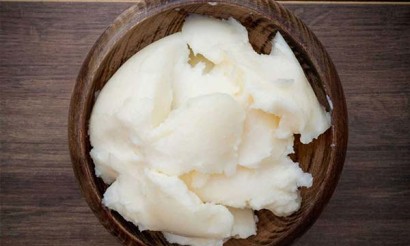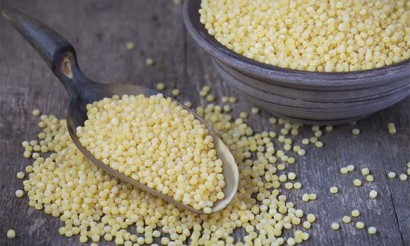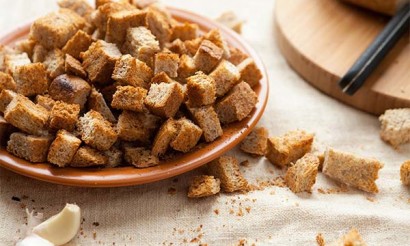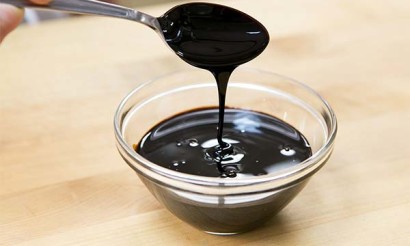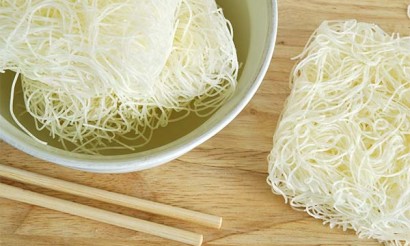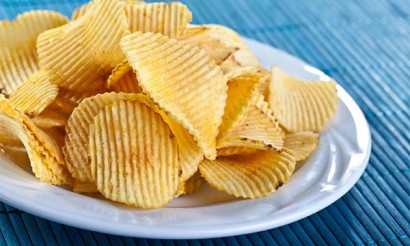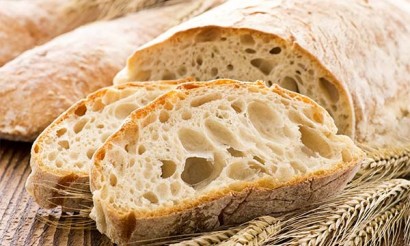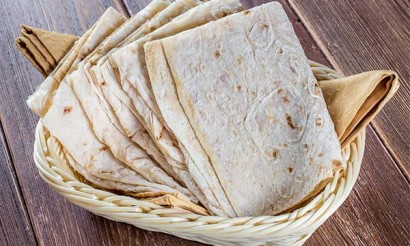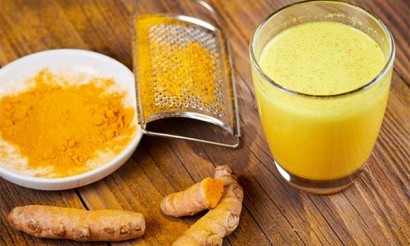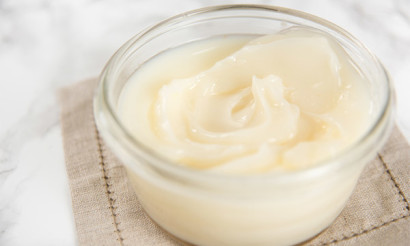Oat bran: what is it, useful properties and harm
On the useful properties of oat bran began to talk relatively recently - in the 80s of last century. The impetus for the use of this unique product for the recovery of the body, purification, reduction of harmful cholesterol and the prevention of diabetes were the research of scientists in Australia and the United States. Bran as a food has also been scientifically proven to be associated with a reduced risk of tumors in the intestines.
- What is oat bran
- What is it made of?
- What is the difference between oat bran and flakes
- Which bran is healthier: oat bran or rye bran
- Composition and calories
- How is oat bran useful?
- General health benefits
- For Women
- For Men
- For Pregnancy
- Breastfeeding
- For children
- How to take oat bran for weight loss
- Oat bran in medicine
- Diabetes mellitus
- For pancreatitis
- For gastritis
- For the bowel
- For constipation
- For liver
- Cosmetic use
- For Face Cleansing
- Whole Body Nutrition
- Facial Peeling
- Oily skin mask
- Whitening mask
- Acne Fighting Mask
- Scalp Scrub
- Decoction for Shiny Hair
- Hair Nutrition
- Harms and Contraindications
- How to choose and store
- How to make oat bran at home
- Norms and peculiarities of using oat bran
- What can be made from oat bran: Recipes
- Kefir drink
- Bran broth
- Useful breakfast with persimmons and bran
- Pumpkin Casserole
- Useful cookies
- Flavorful oatmeal
- Creamy breakfast
- Cheese cakes for people on a diet
- Healthy Viennese waffles
- Grainbread
- Can dogs eat oat bran
- Interesting Facts
What is oat bran
This product is the shell of oat grains. It concentrates most of all nutrients (about 90%), and bran has tremendous nutritional value due to its high fiber content. The nutrient substrate obtained from oats is considered the most useful for the human body.
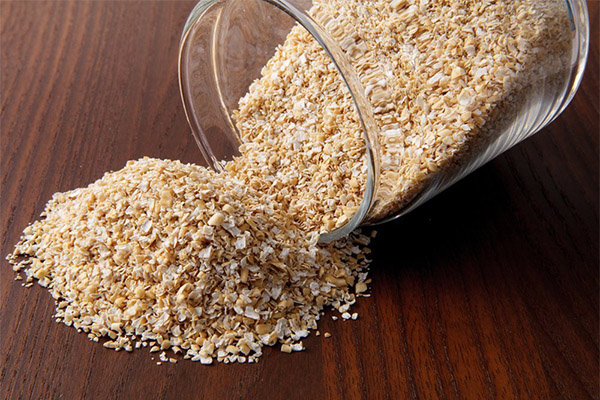
What are made of
To begin with, it is necessary to understand the structure of the grain of cereal crops. The inner part - the germ - is covered by the endosperm, and then the aleurone layer and the fruit and seed shell. It is the outer layer, the shell, that is called the bran.
When the grain arrives at the mill, it is stripped of its outer shell. Thus, bran is a by-product of flour production. The value of the grain shell lies in the high content of insoluble fiber, which cannot be assimilated by the human body, but pass through it in transit, capturing on its way toxins and harmful accumulations.
When in contact with water the fibers swell up, so after eating bran the feeling of fullness comes faster and lasts longer.
The difference between oat bran and flakes
Unlike bran, oat bran is made from the inner contents of the grain. Bran surpasses flakes in absorption properties several times over. They are able to increase in volume 30 times and fill up with liquid.
The fiber content in cereal is much lower. And oat bran, in addition to providing tangible benefits for intestinal peristalsis, can serve as a favorable substrate for the formation of normal microflora of the digestive tract.
What kind of bran is healthier: oat bran or rye bran
Rye bran is widely used for weight loss, as well as in diets of patients with cardiovascular problems. This product contains 50% more zinc than its wheat counterpart, but 30% less phosphorus. At the same time, the percentage of magnesium and potassium is very high.
Bran from oats is considered the most acceptable and useful for the body. If you compare them with rye, it turns out that oat bran is preferable to use in the diet. This is due not only to the high ability to absorb water and absorb toxins, but also to the content of beta-glucans. This is a class of water-soluble fiber that turns into a viscous gel upon contact with water. Such gels coat the mucous membranes of the digestive organs and protect them from aggressive breakdown products of food.
Beta-glucans of oat bran refer to probiotics of natural origin. They also normalize lipid metabolism in the body.
Composition and calories
The content of useful substances in bran is much higher than in oat flour.
With a relatively high caloric content, from 180 to 376 kcal per 100 grams of product (depending on the method of processing and the quality of the raw material), bran contains 55% of carbohydrates, 17.5% of protein and only 7% of fat. As a rule, crumbled bran has a lower caloric value than pressed bran, since flour is often added to the latter.
Crushed oat shells contain many minerals:
- potassium;
- phosphorus;
- magnesium;
- selenium;
- zinc;
- calcium;
- iron.
Bran is also rich in vitamins. They contain B vitamins (B1, B2, B3, B6), E, PP, A, C and D. Bran also contains a small amount of fatty acids.
Minerals in the composition of this useful product are contained in the active form, which is easily assimilated. Thanks to this, the use of bran in food can neutralize the negative effects of radionuclides and carcinogens.
How is oat bran useful?
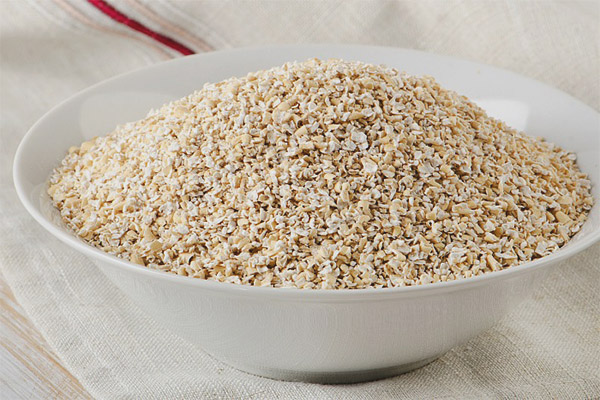
General benefits
The benefits for the body of this product are enormous.
Thanks to the use of bran:
- The digestive processes are normalized;
- Lipid metabolism is normalized and the metabolism is accelerated;
- The skin, hair and nails are saturated with necessary minerals;
- toxins and excess cholesterol are eliminated;
- Blood sugar levels are stabilized;
- Hormone levels and liver function are normalized;
- Normal intestinal microflora develops;
- Excess fat is broken down and toxins are eliminated.
The norm of oat bran on average is 30-60 g per day.
They can be used as an additive in the preparation of various dishes and baked goods, as well as consumed dry with a glass of water.
For women
The benefits of bran for the female body is enormous. Along with the loss of excess weight when using bran, the whole body is saturated with useful substances, and all metabolic processes are normalized.
However, women should not exceed the recommended minimum intake of bran per day. It is better to stick to the limit of 25 grams per day, because systematic exceeding the norm can lead to negative consequences.
For men
For men, oat bran will be useful as a vitamin supplement, as well as a rich source of fiber. This product is ideal for both active and passive lifestyles, as the effect of bran on the normalization of digestion in the intestines is great.
In pregnancy
Often women in pregnancy face intestinal dysfunction. The use of bran pregnant women are allowed not only to maintain normal peristalsis of the digestive tract, but also to saturate the body with vitamins and minerals, which are badly needed fetus.
Breastfeeding
After giving birth, many young mothers face the problem of constipation. Consumption of bran fiber helps to adjust the digestive process, eliminate dysbacteriosis, and avoid the development of hemorrhoids, which often bother breastfeeding mothers.
The only caveat when breastfeeding - bran should be consumed in moderation to avoid excessive gas.
Nutrients from this natural product enter the baby's body through the mother's milk, so it serves as a recommended vitamin supplement.
For children
As a rule, children are reluctant to eat bran, as it is almost tasteless in its dry form. However, they can be added to baked goods or second courses instead of flour.
A child who has problems with stool retention will find oat fiber very useful. It can be introduced into the diet from the age of 2 years, starting with 1 tsp per day. Bran can be added to juices, soups, side dishes. In such a veiled form to feed the child useful fiber is easier.
For the reception of bran children is better to assign the first half of the day and be sure to add to the daily menu dairy products.
How to take oat bran for weight loss
With the help of fiber, it is easy to regulate the appetite. This is especially appreciated by people who unsuccessfully seek to get rid of extra pounds of weight. Nutritionists advise for weight loss purposes to consume a tablespoon of bran on an empty stomach with a glass of water. You can start your meal with the natural supplement no more than 3 times a day.
Bran solves the problem of overeating, because the fibers swelling in the stomach accelerate the feeling of fullness. Fiber refers to slow carbohydrates, which means that normal blood glucose levels will be maintained longer. As a consequence, the feeling of hunger comes later. In addition, beta-glucans in bran are converted in the body into a gel-like substance that protects the mucous membranes of the digestive organs, thereby reducing the caloric content of food. This also encourages the body to use its own fat reserves to ensure life.
Oat bran in medicine
Bran is scientifically recognized to reduce the glycemic index of foods and absorb excess cholesterol. In general, this product is recommended as a nutritional supplement to a diet composed of healthy foods.
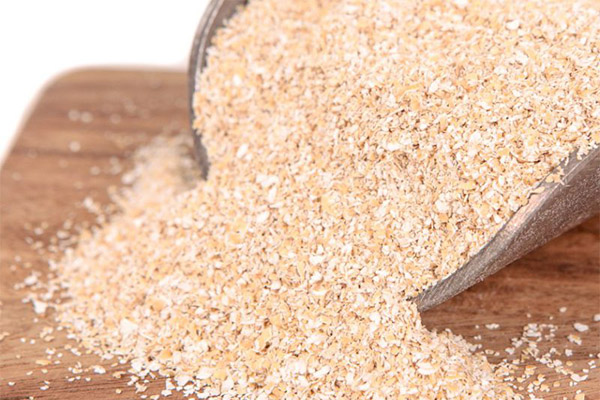
Nevertheless, the consumption of bran has some nuances. Carbohydrates from this product are really absorbed very slowly, but a certain percentage does get into the bloodstream. This should be taken into account by followers of a low-carbohydrate diet.
In addition, people with a tendency to inflammation of the intestinal walls should take this product with caution, as the condition may worsen.
For Diabetes Mellitus.
The known ability of oat bran to maintain normal blood glucose levels makes them desirable in the diet of every diabetic. Nevertheless, do not get carried away with them. In the pursuit of stable indicators of the concentration of sugars should not exceed the highest limit of the daily rate of bran, which is 60 g.
Important: The glycemic index of oat bran is 50 units.
In case of pancreatitis.
Only the attending physician can determine the possibility of using bran in this disease. For most patients with pancreatitis in remission stage, fiber is a welcome product in the diet. After an attack of pancreatitis you should not use bran, they can be gradually introduced into the menu after 10 days after the decline of exacerbation.
With pancreatitis should not exceed the norm of 30 g of bran per day. With the disease in the acute phase, they should be abandoned.
Consumption of oat bran by patients with pancreatitis in pure form is undesirable because they overload the pancreas. It is advisable to add them to porridges or mix them into fermented dairy products.
Excess fiber can lead to flatulence, intestinal malfunction, bloating, and even hypovitaminosis. Eliminate unwanted symptoms by avoiding the product and drinking plenty of fluids.
For gastritis
The mild effect of bran on the digestive tract puts them among the products recommended by gastroenterologists.
For those suffering from gastritis, the following effects of bran consumption will be useful:
- Stimulation of intestinal contractions and elimination of constipation.
- Additional protection of the inflamed walls of the digestive tract.
- Enrichment with vitamins and minerals.
- Removal of excess cholesterol.
- Absorption of excess acid, relieving pain in the stomach and getting rid of heartburn.
A strict contraindication to the use of bran by patients with gastritis is the acute phase, because there is a high probability of mechanical damage to the mucosa in the extreme degree of inflammation. Thus, with gastritis, oat bran can be added to the diet only during remission, watching for compliance with the recommended daily rates.
For the intestines
Fiber serves as a kind of scourer for the digestive system. Oat bran relieves the intestinal walls from the accumulation of fat deposits and toxins. In addition, natural fibers serve as a substrate for the growth of beneficial microorganisms, thus maintaining normal microflora.
Bran after contact with water in the digestive tract is converted into a substance that reliably coats the mucous walls, performing a protective function.
For constipation
Oat bran - a product for the elimination of constipation, time-tested. Norm of the product with this ailment is 40-60 g per day, but they should be divided into several receptions. Start taking useful fiber should be 1-2 tsp. per day, gradually increasing the volume. This way the body will gradually get used to the new product, it will be easy to trace the reaction.
Bran can be taken on an empty stomach, during a meal or together with drinks. The presence of liquid when using fiber is acutely necessary, because it is necessary for a gentle resolution of the formation of feces.
The use of bran should be accompanied by the intake of sufficient fluid - at least 8 glasses of clean water during the day. With its insufficient intake, the problem of constipation can only worsen.
Do not refuse to use bran if gassiness and heaviness in the stomach increase during the first days of use - it is a normal intestinal reaction to dietary fiber.
The combined use of bran with dried fruit and honey increases the effect.
A good effect is given by the use of a drink for constipation, prepared according to the following recipe:
- Add 2 Tbsp. bran to 1 cup of milk at room temperature.
- Allow to stand for 4 hours.
- Use the drink on an empty stomach, dividing it into several portions.
The so-called bran water also gives relief from constipation. It is prepared by steeping the bran in water in a ratio of 1:5 for 6 hours. The drink is also drunk on an empty stomach. It is better to strain it before use.
For the liver
The use of oat bran has a beneficial effect on the function of the liver, so their use is desirable. However, in the case of painful conditions associated with the work of this organ, it is better to give up the fiber for a while.
Usage in cosmetology
Oat bran is a real boon for cosmetology. They contribute to the normalization of metabolic processes from the inside, but their use in face and hair masks also gives tangible positive results. On the face, this unique product has a lifting effect, softens and nourishes the skin, and also acts as a mild exfoliation. With the help of fiber you can restore damaged hair and bring back its shine.
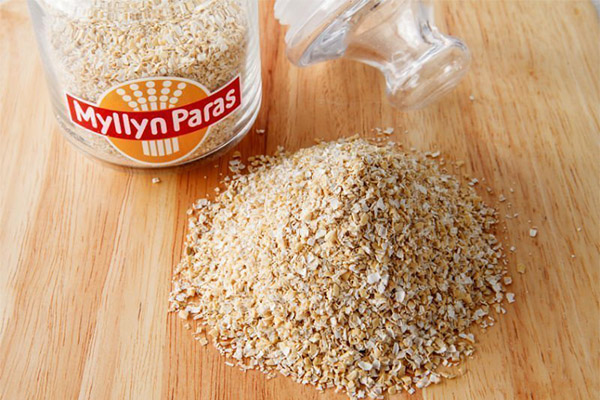
Benefits for the hair:
- cleansing the scalp;
- nourishing hair roots;
- moisturizing the skin;
- elimination of itching and flaking;
- smoothing of hair structure;
- removal of excessive pigment.
For face cleansing
Pour the bran in warm water and stir to a mushy state. On the face, pre-moistened with water, apply the mask with your hands. Exposure time - 15 minutes. Rinse off the mass with clean water.
Nourishing for the whole body
An ancient recipe for a bath with bran, which makes the skin velvety and purified, is available to modern beauties.
Bran (200 g) put in a canvas cloth or gauze folded in half. This bag placed on the faucet so that the water passes through the bran and flowed into the bath. After filling it, you can further squeeze the bran. After the procedure, allow the water to soak into the skin without wiping with a towel.
Face peeling
Take about 1 tbsp. of oat bran with warm water. Leave to infuse for a few minutes and stir. Apply the mush to the face, making massaging movements that allow you to cleanse the skin of dead cells and improve capillary nutrition. After the procedure wash with warm water.
Oily skin mask
Mix bran with hot water in a ratio of 1:2, infuse 5-10 minutes. Add one egg white, a few drops of lemon juice and vegetable oil (olive oil is best suited). Apply the mask on the face cleaned from makeup and leave for half an hour. With this remedy you can get rid of inflammation and reduce oily shine.
whitening mask
Base ingredients: bran (1 tbsp.), unscented yoghurt (3 tbsp.) and lemon juice (0.5 tsp.). Mix all the ingredients and leave to infuse for 10 minutes. Apply the mixture to face and decollete zone, leave it for 15 minutes, then wash off with water at room temperature.
Anti-acne mask
Miraculous effect has a mask of oat bran (2 tbsp.) with the addition of baking soda (1 tsp.). Dilute the mass with water and stir. The consistency should resemble a thick sour cream. Apply the mixture to the face for 15-20 minutes, rinse with warm water.
Scalp Scrub
Pour the bran in water and allow to stand. For scalps prone to excessive fat formation, you can replace the water with whey or kefir. And the addition of herbal infusions further stimulates hair follicles to growth.
Apply the scrub to the root area of the hair with massaging movements. Thanks to this mask, the scalp is cleansed of keratinized cells, improves microcirculation of the cellular structures.
Decoction for shiny hair
Pour a glass of bran 500 ml of water and boil for a few minutes. After cooling, strain and apply to the entire length of the hair. After that, cover your head with a towel or a bag and hold for about half an hour. Rinse with cool water. Such a mask not only gives your hair a healthy shine, but also strengthens them along the entire length.
Nutrition for the hair
Prepare a broth of bran, cool it down. Add 1 egg yolk and 50 g of honey for half a cup of liquid. Apply the mixture to the hair and leave it for 20-30 minutes. Rinse with water. Enhance the effect of the mask can be added to the rinse water with a small amount of citric acid.
Harm and contraindications
Oat bran, like any other food additive, has contraindications for use. It is worth refraining from their use in the acute course of diseases of the digestive system. With any disorders of the gastrointestinal tract before adding fiber to the diet should consult a doctor.
Excessive consumption of bran can lead to the following disorders:
- intestinal colic;
- excessive gas;
- intestinal obstruction;
- gastritis;
- inflammation of the walls of the digestive tract.
When using bran as part of a mono-diet, there may be negative consequences, which are manifested by a multiple loss of minerals important for life (iron, zinc, calcium, magnesium, aluminum).
The norm of eating bran for a healthy person is no more than 60 g per day.
How to choose and store
Bran, which is available in almost every grocery store, practically does not differ from each other. Cheaper and more expensive brands are similar in organoleptic indicators and mineral composition.
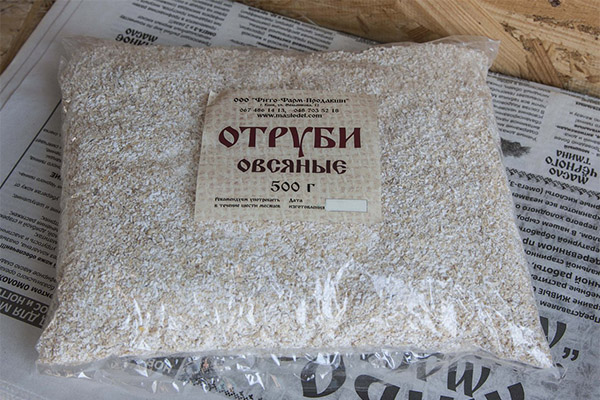
Oat fiber is odorless and virtually tasteless. If you have the opportunity to open a packet of bran, you should make sure that there is no smell of mold, and the taste should not be present bitterness. The usual color of the product is pale brown or gray-beige.
Pure bran is sold in crumbly form. Various modifications in the form of chips, tablets, and pressed pellets contain flour, which helps shape the product. Bran without flavorings is more useful.
Store fiber should be in a container under a tight lid. It is preferable to pour the bought bran into a glass jar immediately after purchase. You can store the product for a long time, if you observe the necessary conditions - tightness and dryness inside the container.
How to make oat bran at home
Fiber can be produced by grinding oat grains with a blender, food processor or coffee grinder. However, you should remember that it is the top shells of cereals that are particularly valuable, so it will not be superfluous to sift the resulting mass. The bran will remain in the sieve, while the finer particles can be used as flour.
Norms and peculiarities of oat bran consumption
- The norm of consumption for a healthy person is 60 g of bran per day.
- For women, this figure varies between 25-30 g, depending on body weight.
- In various diseases, it is better to reduce the daily rate to 20 g.
- Children's dosage is 15-20 grams of fiber per day.
What can be cooked from oat bran: recipes
With great success, fiber is used in the manufacture of useful baked goods and a variety of dishes. For baking bread or muffins, you should add up to 100 g of bran for every 0.5 kg of flour. Instead of flour, bran can be added to fish, meat, cutlets and vegetables. Flakes can replace semolina in casseroles, sauces and soups, as well as adding a healthy ingredient to salads, desserts or drinks.
Experienced housewives pre-fry bran in the oven, and then grind it. After such manipulations, they acquire new organoleptic qualities that complement the taste of classic dishes.
Also with the addition of oat bran can be prepared:
- oatmeal;
- bread and rolls;
- muffins;
- pancakes;
- savory pies;
- pies;
- pizza.
Kefir drink
A classic recipe for those on a diet. To prepare the drink you need to mix nonfat yogurt without additives or kefir with bran and infuse for a quarter of an hour. As a sweetener, you can add cocoa or sweetener.
Bran broth
You can use as an independent drink or add to basic dishes. To prepare, take 1 tbsp. bran per glass of water, boil for 7-10 minutes and let stand for at least 24 hours. Before using, strain the decoction.
Useful breakfast with persimmons and bran
For the preparation will be required:
- oat bran (2 tbsp.);
- Yogurt without sweeteners (100 g);
- persimmon (1 medium fruit);
- any jam (1 tbsp.);
- oat flakes (2 tablespoons).
Dice persimmons, mix all components, transfer to a bowl or a glass. Useful breakfast is ready. It is better to take instant cereal, or you can not add them. Peach or orange jam goes best with persimmon.
Pumpkin casserole
To prepare the dish you will need:
- bran (20 g);
- peeled pumpkin (250 g);
- steamed rice (40 g);
- water (4 tbsp.)
- eggs (2 pcs.)
- milk (6 tbsp.)
- salt and spices to taste.
Pour boiling water over rice and let it stand for a few hours. Grate peeled pumpkin pulp and mix with bran and swollen rice. Add water, salt and spices to the mass. Put it on a baking tray and bake in an oven for about half an hour at 180°C. Mix eggs with milk and smear the mixture on the surface of not fully cooked casserole. Bake for another 10-15 minutes.
Useful cookies
To prepare the cookies you need:
- oat bran (250 g);
- chopped walnuts (4 tbsp.);
- eggs (4 pcs.)
- sugar (1 tbsp.)
- butter (1 tbsp.).
Beat the egg whites separately from the yolks. After the formation of a strong white foam add all the ingredients. Stir with smooth movements. If the mass is crumbly, add a little flour. Place the dough on a baking tray and bake in the oven at medium temperature for 15-20 minutes.
Flavorful oatmeal
To make a delicious breakfast, you will need:
- oatmeal flakes (1 cup);
- oat bran (4 tbsp.)
- milk (2 cups);
- banana (1 pc., you can replace it with 2 apples)
- Cinnamon (on the tip of a knife).
Soak the oat flakes in boiling water, let stand under a lid. After swelling to oatmeal, add milk and bran. Bring mixture to a boil over low heat. Add fruit and season with cinnamon.
Creamy breakfast
Ingredients of the dish:
- cottage cheese (200 g);
- peanut paste (2 tbsp.)
- oat bran (1 tbsp.).
Mix the components. Useful and nourishing meal ready. Such a mass can also be spread on toast.
Cheesecakes for those on a diet
For the preparation will be required:
- oat bran (2 tablespoons);
- low-fat cottage cheese (400 g);
- baking powder (7 g);
- sweetener (4 tablets);
- vanilla concentrate (3 g).
Mix the eggs with bran and cottage cheese. In the mass enter the baking powder and vanilla. Dissolve sweetener in 40 g of warm water, pour into the mass. Stir the dough well. Bake the cheesecakes on a baking tray, shaping them with a spoon or in special forms, for 30-35 minutes. Ready cheesecakes have a golden crust.
Useful Viennese waffles
For preparation you will need:
- oat bran (2 tbsp);
- cottage cheese (2 tablespoons);
- Potato starch (1 tbsp.);
- egg (1 unit);
- baking powder (pinch);
- sugar and salt (to taste).
Mix all the ingredients in a bowl. Beat the egg and add soft cottage cheese. Thoroughly mix. Cook in a waffle iron. Average cooking time is 10 minutes. Before serving, fragrant waffles can be garnished with berries, fruit, chocolate or grated cheese.
Grain Bread
The ingredients of this bread are many, but it is suitable even for those who are on a diet.
To prepare it you will need:
- eggs (2 pcs.);
- oat bran and wheat bran (5 and 2 tablespoons, respectively);
- cottage cheese (130 g);
- flax seeds (30 g);
- vegetable oil (2 tablespoons);
- sunflower and pumpkin seeds (80 and 10 g, respectively)
- raisins (40 g);
- malt (1 tbsp.)
- peanuts (50 g);
- salt and coriander (0,5 tsp. each).
Dilute dry malt with boiling water and stir until it becomes a paste. Cool it. Pre-soak raisins, pouring them in boiling water. Combine the cottage cheese with bran, eggs and the rest of the dry ingredients, add the malt mass. Coat a baking dish with butter and sprinkle with chopped peanuts, place the batter on top. Sprinkle the form with pumpkin seeds, nuts and coriander. Bake the bread in an oven heated to 175-180⁰C for about 30 minutes.
Can dogs eat oat bran
Fiber is necessary for dogs in the diet, but this product should be introduced correctly. It is undesirable to give bran to a four-legged friend in a dry form, because when the mass passes through the digestive system, the useful substances are removed along with the fiber, and the positive effect of the product is not felt.
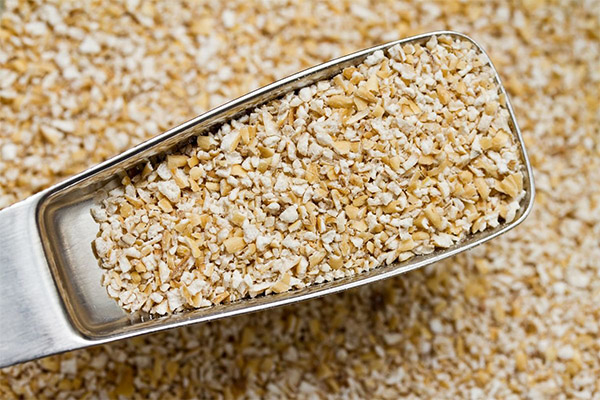
Before giving oat bran to the dog, they should be infused in water for about 40-45 minutes to allow them to swell. Once the plant fibers have absorbed the moisture, they can be used as a supplement to the dog's diet. It is better to give bran to the pet in the first half of the day, accompanying the intake with fermented dairy products.
For miniature dogs, the daily rate of bran is no more than 3 tsp, and for large dogs the dosage increases to 30-35 g. The supplement can be used in the diet of dogs daily. However, for animals with suspected gastritis or peptic ulcer disease, the use of fiber is contraindicated.
For dogs under the age of 8 months (but not under 5 months), it is better to boil bran and let it swell as much as possible, and for older individuals the product is enough to soak in warm water.
Interesting facts
- Asian countries had a negative experience with the consumption of peeled rice in the ninth century. The well-to-do townspeople decided to forgo the conventionally filthy bran-free rice in favor of the polished product. The consequences were disastrous - hallucinations, compulsions, loss of sensitivity and limb control befell the wealthy. These terrible manifestations invariably led to death in agony. The physicians of the time called the mysterious disease "beri-beri" and declared the spread of the epidemic. Only 200 years later, Christian Eijkman, a Dutch scientist, discovered that the cause of this fatal weakness was a banal lack of vitamin B1 (thiamine), which rice bran is rich in.
- The medieval nobility suffered from constipation. It was even called "the disease of kings. But the commoners had no digestive problems. It was because of the crude fiber, which was abundantly present on the tables of the common people. The nobility did not eat coarse food and so problems with emptying the bowels were found in practically every noble house.
- Constipation in chronic form became the most common problem of the population of highly developed countries. For example, in the countries of Western Europe and in the United States about 15% of the mature population and more than 25% of the elderly suffer from this inconvenience. At the same time on the African continent, where the food with a high content of coarse dietary fiber prevails, such cases are isolated.
- Boston scientists have conducted a number of studies that have proven the beneficial effects of whole grain fiber on vascular and heart health. Bran also proved to be able to significantly reduce blood cholesterol levels.
«Important: All information on this site is provided for informational purposes only. for educational purposes. Consult a specialist before applying any recommendations. specialist before applying any of the recommendations. Neither the editors nor the authors shall be liable for any possible harm caused by materials."

